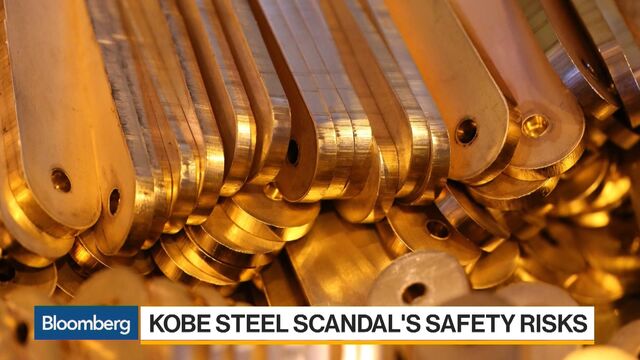Out-source MRT to 中铁 & forget about SBS Transit SMRT, sell these useless firms to Karunguni ASAP!
http://news.sina.com.cn/o/2017-11-09/doc-ifynrsrf3181292.shtml
为中国制造爆灯:中国地铁将要开进美国本土
2017年11月09日13:07 央视财经频道
为中国制造爆灯:中国地铁将要开进美国本土
原标题:[揭秘]为“Made in China”爆灯!中国地铁要开进美国了
随着我国高铁的迅速发展,高效、便捷、舒适的乘车环境,让高铁动车组成为大众出行首选。
一起走进推出中国标准动车组“复兴号”的中国中车,看看他们是如何创新发展的?

在“砥砺奋进的五年”大型成就展上,中国高铁作为中国制造走出去的新名片,吸引了众多观众的目光,而中国标准动车组“复兴号”近期在京沪高铁以350公里的时速载客运行,更是刷新了“中国速度”,引得现场观众驻足留看和拍照留念。
完全自主 “复兴号”开启高铁新征程
时速350公里、发送旅客59.2万人次、日均2万人次,平均客座率95%,最高客座率达到99.4%。10月21日,“复兴号”动车组在迎来运营“满月”时交出了一份令人满意的成绩。

中国中车股份有限公司总工程师 张新宁 介绍,复兴号经历了四年的创新,是党的十八大以来在轨道交通装备行业,技术创新的一个集中体现。比如这次的复兴号在空间上更宽敞,大家上去很舒服。另外,在乘客的舒适度上也有了很大的提高,很多乘客都反映,复兴号的噪音更小,车厢内更安静,同时还提供了无线WIFI,旅客从此在高铁上不再孤单。
在中国中车四方股份公司,央视财经记者就见到了一辆已经调试完毕即将投入运营的复兴号列车,中车四方股份公司负责人告诉记者,复兴号之所以运行的又快又稳,就是因为它有一颗非常聪明的大脑在时刻运转。

中国中车四方股份公司副总经理 梁建英 介绍,复兴号具有一个非常聪明的大脑,具体是指车辆有一个非常现代化的网络控制系统。所有车辆需要采取的动作,首先要听从这个大脑的指挥。大脑指挥首先要有一个基本信息的收集,所以在车上一共有2500多点的基础信息大脑基本数据,通过大脑的梳理,识别计算,然后分析评判,来决策这个车辆到底来执行什么样的动作。

中国铁路总公司披露的数据显示,截至2016年底,中国高铁运营里程超过2.2万公里,占世界高铁运营总里程60%以上,位居全球第一。
中国中车股份有限公司总工程师 张新宁 说,从这个意义上讲,复兴号动车组、中国的高铁,以及以复兴号动车组为代表的其它轨道交通装备,包括大功率机车、客车、货车,以及现在日新月异的城市轨道交通车辆,这些方面的发展都得到了很大进步。
打造一张永不褪色的国家名片
创新永无止境。中国高铁从“追赶者”到“引领者”的角色转换,是中国高铁发展的一个缩影,而达到世界先进水平的“复兴号”动车组的启程开跑,为高铁“走出去”、打造永不褪色的名片再添一件利器。

出生于“铁道世家”的郭锐,已经在中车四方股份公司工作近20年,他经手了时速200公里到380公里各个速度等级的高速动车组,从他和他的团队手中装配出的高速动车组超过1100列。
中国中车四方股份公司首席技师 郭锐 告诉记者,他在这个过程中感受是非常深的。从一开始进厂的内燃机车,到目前复兴号的生产过程,可以说是有目共睹了公司的发展。

就在今年的9月份,中车四方股份公司在“走出去”方面再下一城。与巴西圣保罗城际铁路公司签署了8列(64辆)城轨车辆供货合同,用于装备圣保罗13号线。这也是中国企业在巴西圣保罗赢得的城轨车辆第一单。
如今,中国中车已经进入波士顿、芝加哥、洛杉矶、费城四大城市,获得的地铁和通勤客车订单达1359辆。仅在最近半年内,就先后在波士顿、洛杉矶获得184辆地铁订单,在费城获得45辆通勤客车订单。

中国中车股份有限公司总工程师 张新宁 介绍,在未来一个时期,通过讨论,也是要围绕着如何进一步坚持打造一张永不褪色的金色名片,要打造一张永不褪色的国家名片。
责任编辑:霍宇昂
http://news.sina.com.cn/o/2017-11-09/doc-ifynrsrf3181292.shtml
为中国制造爆灯:中国地铁将要开进美国本土
2017年11月09日13:07 央视财经频道
为中国制造爆灯:中国地铁将要开进美国本土
原标题:[揭秘]为“Made in China”爆灯!中国地铁要开进美国了
随着我国高铁的迅速发展,高效、便捷、舒适的乘车环境,让高铁动车组成为大众出行首选。
一起走进推出中国标准动车组“复兴号”的中国中车,看看他们是如何创新发展的?

在“砥砺奋进的五年”大型成就展上,中国高铁作为中国制造走出去的新名片,吸引了众多观众的目光,而中国标准动车组“复兴号”近期在京沪高铁以350公里的时速载客运行,更是刷新了“中国速度”,引得现场观众驻足留看和拍照留念。
完全自主 “复兴号”开启高铁新征程
时速350公里、发送旅客59.2万人次、日均2万人次,平均客座率95%,最高客座率达到99.4%。10月21日,“复兴号”动车组在迎来运营“满月”时交出了一份令人满意的成绩。

中国中车股份有限公司总工程师 张新宁 介绍,复兴号经历了四年的创新,是党的十八大以来在轨道交通装备行业,技术创新的一个集中体现。比如这次的复兴号在空间上更宽敞,大家上去很舒服。另外,在乘客的舒适度上也有了很大的提高,很多乘客都反映,复兴号的噪音更小,车厢内更安静,同时还提供了无线WIFI,旅客从此在高铁上不再孤单。
在中国中车四方股份公司,央视财经记者就见到了一辆已经调试完毕即将投入运营的复兴号列车,中车四方股份公司负责人告诉记者,复兴号之所以运行的又快又稳,就是因为它有一颗非常聪明的大脑在时刻运转。

中国中车四方股份公司副总经理 梁建英 介绍,复兴号具有一个非常聪明的大脑,具体是指车辆有一个非常现代化的网络控制系统。所有车辆需要采取的动作,首先要听从这个大脑的指挥。大脑指挥首先要有一个基本信息的收集,所以在车上一共有2500多点的基础信息大脑基本数据,通过大脑的梳理,识别计算,然后分析评判,来决策这个车辆到底来执行什么样的动作。

中国铁路总公司披露的数据显示,截至2016年底,中国高铁运营里程超过2.2万公里,占世界高铁运营总里程60%以上,位居全球第一。
中国中车股份有限公司总工程师 张新宁 说,从这个意义上讲,复兴号动车组、中国的高铁,以及以复兴号动车组为代表的其它轨道交通装备,包括大功率机车、客车、货车,以及现在日新月异的城市轨道交通车辆,这些方面的发展都得到了很大进步。
打造一张永不褪色的国家名片
创新永无止境。中国高铁从“追赶者”到“引领者”的角色转换,是中国高铁发展的一个缩影,而达到世界先进水平的“复兴号”动车组的启程开跑,为高铁“走出去”、打造永不褪色的名片再添一件利器。

出生于“铁道世家”的郭锐,已经在中车四方股份公司工作近20年,他经手了时速200公里到380公里各个速度等级的高速动车组,从他和他的团队手中装配出的高速动车组超过1100列。
中国中车四方股份公司首席技师 郭锐 告诉记者,他在这个过程中感受是非常深的。从一开始进厂的内燃机车,到目前复兴号的生产过程,可以说是有目共睹了公司的发展。

就在今年的9月份,中车四方股份公司在“走出去”方面再下一城。与巴西圣保罗城际铁路公司签署了8列(64辆)城轨车辆供货合同,用于装备圣保罗13号线。这也是中国企业在巴西圣保罗赢得的城轨车辆第一单。
如今,中国中车已经进入波士顿、芝加哥、洛杉矶、费城四大城市,获得的地铁和通勤客车订单达1359辆。仅在最近半年内,就先后在波士顿、洛杉矶获得184辆地铁订单,在费城获得45辆通勤客车订单。

中国中车股份有限公司总工程师 张新宁 介绍,在未来一个时期,通过讨论,也是要围绕着如何进一步坚持打造一张永不褪色的金色名片,要打造一张永不褪色的国家名片。
责任编辑:霍宇昂



